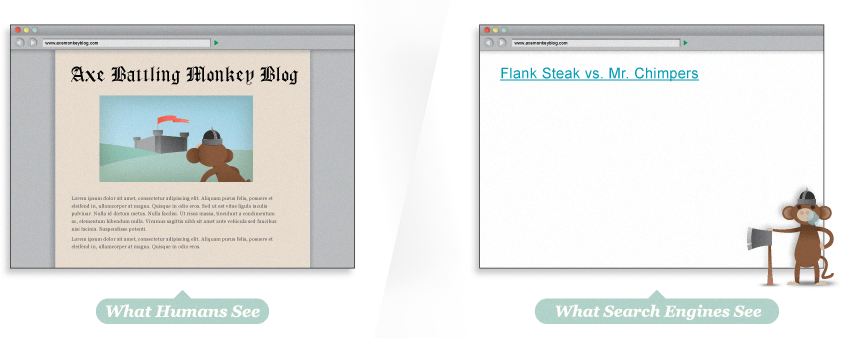Search Engine Friendly Development: Indexable Content
Part 1 of our 8-part series on developing search engine friendly website structures. This was originally written by Rand Fishkin and Moz Staff, and posted on posted Moz. Image courtesy PixBay.
Search engines are limited in how they crawl the web and interpret content. A webpage doesn’t always look the same to you and me as it looks to a search engine. In this section, we’ll focus on specific technical aspects of building (or modifying) web pages so they are structured for both search engines and human visitors alike. Share this part of the guide with your programmers, information architects, and designers, so that all parties involved in a site’s construction are on the same page.
Indexable Content
To perform better in search engine listings, your most important content should be in HTML text format. Images, Flash files, Java applets, and other non-text content are often ignored or devalued by search engine crawlers, despite advances in crawling technology. The easiest way to ensure that the words and phrases you display to your visitors are visible to search engines is to place them in the HTML text on the page. However, more advanced methods are available for those who demand greater formatting or visual display styles:
- Provide alt text for images. Assign images in gif, jpg, or png format “alt attributes” in HTML to give search engines a text description of the visual content.
-
Supplement search boxes with navigation and crawlable links.
-
Supplement Flash or Java plug-inswith text on the page.
-
Provide a transscript for video and audio content if the words and phrases used are meant to be indexed by the engines.
Seeing your site as the search engines do
Many websites have significant problems with indexable content, so double-checking is worthwhile. By using tools like Google’s cache, SEO-browser.com, and the MozBar you can see what elements of your content are visible and indexable to the engines. Take a look atGoogle’s text cache of this page you are reading now. See how different it looks?

“I have a problem with getting found. I built a huge Flash site for juggling pandas and I’m not showing up anywhere on Google. What’s up?”

Whoa! That’s what we look like?
Using the Google cache feature, we can see that to a search engine, JugglingPandas.com’s homepage doesn’t contain all the rich information that we see. This makes it difficult for search engines to interpret relevancy.

Hey, where did the fun go?
Uh oh … via Google cache, we can see that the page is a barren wasteland. There’s not even text telling us that the page contains the Axe Battling Monkeys. The site is built entirely in Flash, but sadly, this means that search engines cannot index any of the text content, or even the links to the individual games. Without any HTML text, this page would have a very hard time ranking in search results.
It’s wise to not only check for text content but to also use SEO tools to double-check that the pages you’re building are visible to the engines. This applies to your images, and as we next, to your links as well.


